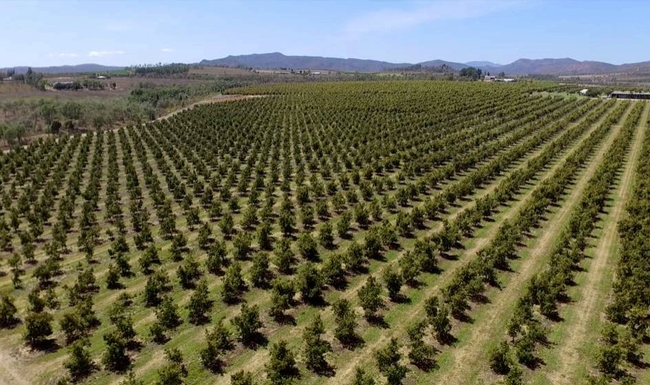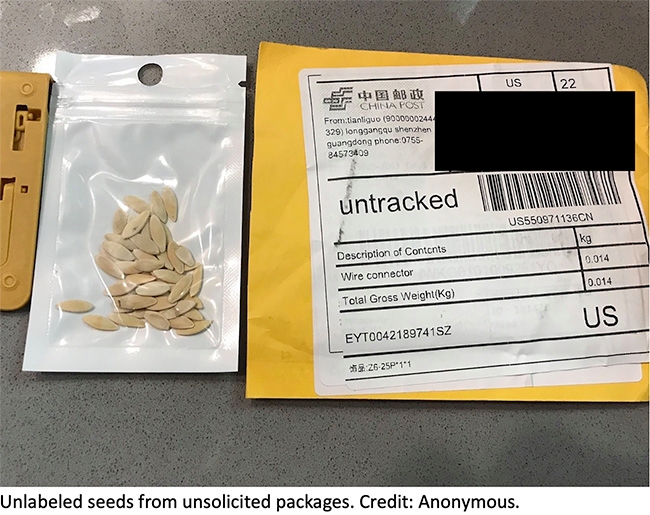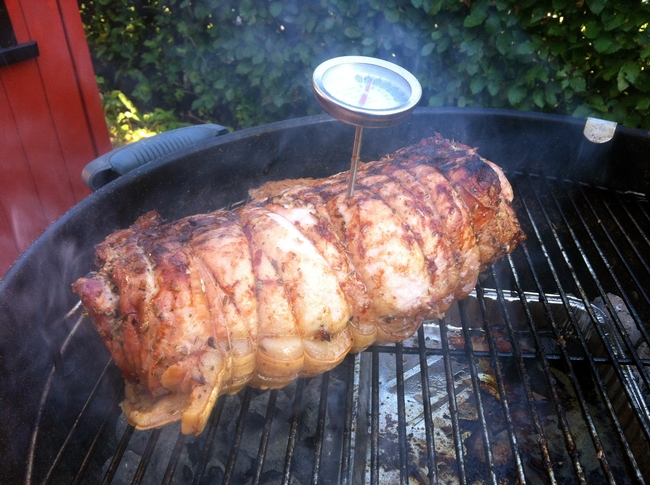
Posts Tagged: usda
USDA Brings Back the Goods - Fruit
You may not have heard of USDA plant explorers David Fairchild and Palemon Howard Dorsett, but they are among those who have had the greatest impact on what we eat in the United States. Now a silent film of their 1925–26 collecting trip to Ceylon (Sri Lanka), Sumatra, and Java has been found by the National Agricultural Library (NAL).
One hundred years ago, the national cuisine was rather plain—heavy on meat, potatoes, and cheeses, and with a very limited palette of fruits and vegetables. But Fairchild, Dorsett, and other USDA plant explorers trekked across the world to find new crops and ornamental plants for the country.
Fairchild alone is credited with the introduction of more than 200,000 exotic plants and crop varieties, including avocado, flowering cherry trees, hops, horseradish, kale, nectarines, papaya, and pistachios.
Dorsett is best known for collecting germplasm that has helped to build soybeans into a $40 billion-a-year U.S. crop.
In 1925, Fairchild and Dorsett led a USDA expedition to Ceylon, Sumatra, and Western Java, during which they scoured markets, botanical gardens, farms, roadsides, and even beaches to collect seeds and plant specimens. Accompanying the explorers was Dorsett's son Jim, whose job was to document the trip photographically.
Jim Dorsett was equipped with a then state-of-the art Sept camera that could take sharp still photos, fast-action sequence photos, and movies. Fairchild was the first to acknowledge that Jim Dorsett's equipment and techniques were far superior to his own. But he was not the last, as National Geographic hired Jim Dorsett soon after he returned from the expedition.
Recently, NAL's Special Collections staff began an inventory of their 16-mm films. They discovered a poorly labeled film canister. Once they began watching, it didn't take long into the 21:06-minute silent film to realize what they had.
“It is an amazing film,” says botanist Karen Williams with the Agricultural Research Service's National Germplasm Resources Laboratory. “It offers rare insights into how people were using plants at that time. Were they using the same plants in different ways than is now common in the region? In addition, they included natural habitats in the film. Botanists may be able to make comparisons between some of the plants that are identifiable in the film and plants known to occur in the same region today—or they may find that some are rare or even extinct today,” she adds.
A collaboration between NAL and the Fairchild Tropical Botanic Gardenin Coral Gables, Florida, has begun to interpret the botanical and historical context of the film.
“A fascinating movie to watch and a real jewel in ethnobotany, particularly when you consider it was made in the early 20th century,” says Fairchild Tropical Botanic Garden adjunct faculty and Florida International University professor Javier Francisco-Ortega. “The film covers so many things: new crops, plants as avenues to teach, ethnography, plants as tools and building materials. There is one sequence where you see them collecting a certain bamboo and then a man building with it.”
You can watch a digitized version of the entire film on YouTube Those were the days of really getting into travel.
Paula Sewell has biographies of three of the USDA explorers - David Fairchild, Frank Meyer (Meyer Lemon) and Wilson Popenoe (Pop Enoe). Turns out Popenoe retired to Antigua Guatemala and Tony Brown of Carpinteria went to the guru to learn more about the cherimoya and how best to nurture it here and from there the crop flourished and the whole family was involved - Johnny, Peter and Emily.
Wilson Popenoe in the field on his horse Starlight using a McClellan saddle
USDA Climate Smart Resources for Agriculture
Are you interested in climate-smart solutions for your agricultural or forestry operation? USDA offers voluntary programs and services to help you build soil health, sequester carbon, reduce greenhouse gas emissions, enhance productivity and commodity marketability, and mitigate the impacts of climate change while building resilience to strengthen your operation.
Check it out

USDA Investigating Packages of Mysterious Seeds
Have you had unexpected seeds show up in the mail? Unknown seeds could be invasive plants, contain invasive insects, or have plant disease causing agents. Here's what the United States Department of Agriculture Animal Plant and Health Inspection Service (USDA APHIS) has to say about it.
USDA Investigates Packages of Unsolicited Seeds
USDA is aware that people across the country have received suspicious, unsolicited packages of seed that appear to be coming from China. USDA's Animal and Plant Health Inspection Service (APHIS) is working closely with the Department of Homeland Security's Customs and Border Protection, other federal agencies, and State departments of agriculture to investigate the situation.
USDA urges anyone who receives an unsolicited package of seeds to immediately contact their State plant regulatory official or APHIS State plant health director. Please hold onto the seeds and packaging, including the mailing label, until someone from your State department of agriculture or APHIS contacts you with further instructions. Do not plant seeds from unknown origins.
At this time, [USDA does not] have any evidence indicating this is something other than a “brushing scam” where people receive unsolicited items from a seller who then posts false customer reviews to boost sales. USDA is currently collecting seed packages from recipients and will test their contents and determine if they contain anything that could be of concern to U.S. agriculture or the environment.
USDA is committed to preventing the unlawful entry of prohibited seeds and protecting U.S. agriculture from invasive pests and noxious weeds. Visit the APHIS' website to learn more about USDA's efforts to stop agricultural smuggling and promote trade compliance.
Summer safety: Tips to avoid foodborne and heat illnesses
Happy summer! It's time to get the barbecue grilling and the pool party started. To keep your summer healthy and fun, UC ANR offers some important safety tips.
Food safety
Food poisoning is a serious health threat in the United States, especially during the hot summer months. According to the Centers for Disease Control and Prevention (CDC), 1 in 6 Americans suffer from a foodborne illness each year, resulting in thousands of hospitalizations and 3,000 deaths.
Both the CDC and U.S. Department of Agriculture (USDA) suggest four key rules to follow to stay food safe:
- Clean: Clean kitchen surfaces, utensils, and hands with soap and water while preparing food. Wash fresh fruits and vegetables thoroughly under running water.
- Separate: Separate raw meats from other foods by using different cutting boards. And be sure to keep raw meat, poultry, seafood and eggs away from other items in your refrigerator.
- Cook: Cook foods to the right temperature; be sure to check internal temperature by using a food thermometer.
- Chill: Chill raw and prepared foods promptly.
Here are some additional tips from the USDA. Be sure to check out the CDC's comprehensive food safety website, which also has materials in both Spanish and English. For food safety tips in real time, follow USDA Food Safety on Twitter.
Summer also means more outside grilling, which can pose unique food safety concerns. Before firing up the barbecue, check out these five easy tips from UC Davis.
Handling food safety on the road
Before you take off on a road trip, camping adventure or boating excursion, don't forget to consider food safety. You'll need to plan ahead and invest in a good cooler.
Remember, warns the USDA, don't let food sit out for more than one hour in temperatures above 90 degrees F. And discard any food left out more than two hours; after only one hour in temperatures above 90 degrees F.
If there are any doubts about how long the food was out, it is best to throw it out!
Get more food safety tips for traveling from the USDA.
Avoid heat illness
“Summer can be a time for fun and relaxation, but in warm climates, we need to stay aware of the signs of heat illness and help keep our family members and co-workers safe,” says Brian Oatman, director of Risk & Safety Services at UC ANR.
“UC ANR provides comprehensive resources on our website, but it's designed around California requirements for workplace safety.” But, Oatman notes, much of the information applies.
“The training and basic guidance – drink water, take a rest when you are feeling any symptoms and having a shaded area available – are useful for anyone at any time.”
To increase your awareness of heat illness symptoms – and to learn more about prevention – Oatman suggests a few resources.
“Our Heat Illness Prevention page has many resources, including links for training, heat illness prevention plans, and links to other sites. One of the external sites for heat illness that I recommend is the Cal/OSHA site, which spells out the basic requirements for heat illness prevention in the workplace. It's also available in Spanish."
For those on the go, Oatman also recommends the National Institute for Occupational Safety and Health (NIOSH) mobile heat safety app.
Dirt at Your Finger Tips - in the Field
WASHINGTON, June 26, 2019 – USDA's Natural Resources Conservation Service (NRCS) and the University of California at Davis Soil Resource Laboratory today announced the release of the iOS and Android SoilWeb app, version 2.0. The app now has a cleaner and more modern interface with GPS-location-based links to access detailed digital soil survey data (SSURGO) published by the NRCS for most of the United States. The newly updated SoilWeb smartphone application is available as a free download on Google Play  and Apple App Store
and Apple App Store  .
.
“SoilWeb reached a new milestone this year when it was integrated with Google Maps and designed to scale across any device, desktop, tablet or smart phone,” said NRCS Chief Matthew Lohr. “SoilWeb app is a portable interface to authoritative digital soil survey data from NRCS, giving users access to practical detailed scientific soil information on the go.”
The SoilWeb app provides users with information relating to soil types that are associated with their location. The images are then linked to information about the different types of soil profiles, soil taxonomy, land classification, hydraulic and erosion ratings and soil suitability ratings. Identifying soil types is important to understanding land for agricultural production purposes and determining flooding frequencies and suitable locations for roads or septic tanks. SoilWeb provides gardeners, landscapers and realtors with information relating to soil types and how to optimally use the soil. Although soil survey information can be used for general farm, local, and wider area planning, a professional onsite evaluation may be needed to supplement this information in some cases.
“SoilWeb is a great way to understand the landscape you live in,” said Anthony O'Geen, UC Davis Professor and Cooperative Extension Specialist in the Department of Land, Air and Water Resources. “Producing food, constructing structures and maintaining landscapes all depend on this little understood, but critical outermost layer of the earth's crust, the soil.”
The app gives access to valuable scientific data through modern technology. All the soil information in SoilWeb was collected from the National Cooperative Soil Survey, organized by the NRCS, and accesses soil survey information the agency has been collecting since the 1890s. The resulting database, the largest such in the world, makes it possible for soil scientists to generate specialized maps using computer-aided techniques.
O'Geen developed SoilWeb with NRCS Soil Scientist Dylan Beaudette, in 2010 when Beaudette was a Ph.D. student at UC Davis. The app was a popular download, but by 2017 was no longer in compliance with requirements set by Apple and Google. Frequent users of SoilWeb had to rely on the web-based version from 2017 to June 2019. Any users with the older version on their phone can do a simple update to access the newest version. The app is a product of a 14-year partnership between NRCS and UC Davis College of Land, Air and Water Resources.

soil layers





